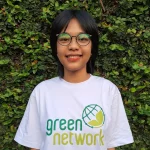Measuring Dietary Diversity Among Women to Strengthen Food Security for All

Photo: Freepik.
Millions of people are facing food insecurity at various levels, which is detrimental to their welfare and wellbeing. Women, in particular, suffer more severely than men due to multiple factors rooted in gender inequality. The Minimum Dietary Diversity for Women indicator aims to provide a simple tool to assess dietary diversity among women of reproductive age to help improve diets and tackle food insecurity.
Food Insecurity & Women
Around 9.1% of the world’s population suffered from hunger in 2023, according to the Food and Agriculture Organization’s measurement based on the prevalence of undernourishment. Meanwhile, around 28.9% (about 2.33 billion people) were food insecure at moderate to severe levels.
Humanitarian crises and climate change are among the biggest factors hindering progress for food security. At this state, the FAO estimated that 582 million people will be chronically undernourished by 2030.
Moreover, food insecurity and malnutrition are inseparable from gender issues. The prevalence of food insecurity is higher among women than men. Data from the FAO further shows that this disparity has been consistent since 2015. However, the gap narrowed in 2022 when the COVID-19 pandemic subsided, from 2.3% to 1.3% in 2023.
Still, malnutrition among women and girls is largely a systemic issue where women often have limited resources, time, and knowledge to access nutritious food. Women’s health also remains largely underrepresented in research, where the default subject of many research and policies is often adult, able-bodied men.
Malnutrition in women can lead to health issues like anemia and impact their educational and work performance. Additionally, women’s diet quality and knowledge are central to supporting a healthy household, as they are often assigned as primary caregivers. Mothers who suffer from malnutrition or have limited nutrition knowledge are at risk of prolonging the deprivation cycle to their children, which influences child survival rates, health, and wellbeing.
The Minimum Dietary Diversity Indicator
Fulfilling our nutritional needs goes beyond just a full belly; it is also a matter of how nutritionally diverse our food intake is. In 2025, the 56th United Nations Statistical Commission session formally adopted a new Sustainable Development Goals indicator on Minimum Dietary Diversity (MDD).
The indicator focuses on women and children, the two groups with the biggest risks of malnutrition. FAO will assume the custody of the MDD for Women (MDD-W), while UNICEF will lead the MDD for Children (MDD-C).
The Minimum Dietary Diversity for Women serves as an indicator to assess dietary diversity at the population level. Dietary diversity, or the variety of food and food groups consumed by a person, is an integral part of diet quality, which also includes aspects like adequacy, moderation, and overall balance of our nutritional intake.
The indicators consist of yes/no questions for women aged 15 to 49 on whether they have consumed at least five out of 10 defined food groups in the previous 24 hour. When a sample has more women who exceed the minimum threshold, a higher chance that women in the population have diets with sufficient vitamins and minerals.
Achieving Food Security for All
The formal adoption of the MDD as an SDG indicator underscores the importance of nutrition in accelerating progress to zero hunger. The MDD-W indicators can be used to conduct impact evaluation of programs, inform policymaking processes, and set targets for improvement by governments and organizations to strengthen food security for all.
Editor: Nazalea Kusuma

Kresentia Madina
Madina is the Assistant Manager for Digital Publications at Green Network Asia. She graduated from Universitas Indonesia with a bachelor's degree in English Literature. She has three years of professional experience working on GNA international digital publications, programs, and partnerships particularly on social and cultural issues.


 Building Heat Resilience Amidst Rising Risk in the Asia-Pacific
Building Heat Resilience Amidst Rising Risk in the Asia-Pacific  Sounds Right and Recognizing Nature as an Artist for Biodiversity Conservation
Sounds Right and Recognizing Nature as an Artist for Biodiversity Conservation  Statewide Treaty Bill: Australia’s First Treaty with the Indigenous Australians Passed in Victoria
Statewide Treaty Bill: Australia’s First Treaty with the Indigenous Australians Passed in Victoria  Involving Coastal Communities in Tackling Ghost Nets Pollution
Involving Coastal Communities in Tackling Ghost Nets Pollution  An Interview with Jasmin Lim, Chief Marketing Officer at BH Global
An Interview with Jasmin Lim, Chief Marketing Officer at BH Global  The Monsoon Wind Power Project Supports Energy Transition Across Borders in Southeast Asia
The Monsoon Wind Power Project Supports Energy Transition Across Borders in Southeast Asia